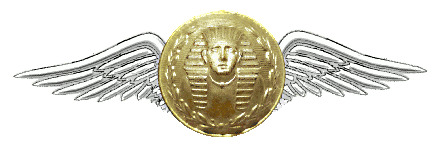
Cours d’anglais aéronautique sur FCL ANGLAIS
Foreign Object Damage (FOD) can be caused by Foreign Object Debris (called FOD too). FOD can also mean « Foreign Object Detection« . Watch the video, and read its transcript below:
Transcript :
Our Air Force has the most technically advanced aircraft in the world – deadly fighters, and bombers, mighty cargo and tanker workhorses, our many helicopters, and a variety of specialty aircraft.
But they can all be easily grounded by FOD.
Foreign objects cause damage to our aircraft in many ways. For example, cut tires, and jammed flight or engine controls. FOD has caused at least six fighter aircraft to crash over the last twelve years! Some of the items that caused these mishaps were:
- Rags;
- Safety wire pliers;
- A piece of aluminum foil;
- A one-inch piece of safety wire;
- Even a small washer!
These incidents show that poor housekeeping, and work practices are still the two major contributors to preventable FOD. We can eliminate FOD. To do so, we must make these six commonsense steps, part of our every job, every step, every day.
- The first step – be aware that you can make a difference, and that FOD is a constant problem. Every time you sign out a tool box, work a job, or just step out to help someone, keep your eyes open for tools, rocks, and other debris. And when you see something, stop, and pick it up. Occasionally, you may need a sweeper to clean up an area. MAC usually coordinate with base OPS. MAC (Military Airlift Command) usually coordinates this support with base OPS.
- The second step – keep your work area clean. Check your shoes for foreign objects, and empty your pockets of keys, change, pencils, and trash. Place these items into a FOD bag before entering the cockpit, intake, other confined areas, or before working on top of the aircraft. Are you covering all of those lines, houses, cannon plugs, and ducts during extended maintenance? The ACES II ejection seat is the most reliable, and safest seat in the world, as long as nothing gets in the way. Somebody did not report losing this pencil tip. It then migrated in flight to the sequence start switch which activates the seat computer as it departs the aircraft. It was discovered during a visual inspection of the seat when it was removed for other maintenance. Because of the protective shield over the switch, and the tight clearance in the cockpit, it normally would never have been found. How do you think the pilots felt when they heard about it? Do you check the area one more time before you leave? It is possible the person before you left something behind.
- Step three – we have to keep our vehicles clean. We know foreign objects get around, and many times are, vehicles carry them out to the flight line. Tire checks – are you constantly doing them every time you went to the flight line? How about after you drove out of the taxiway to let the jet pass? How clean is your vehicle? Is there safety wire, trash, or fasteners on the floor? Is the FOD can overflowing before you empty it? If you have a vehicle magnet installed, are you checking it daily?
- Step four – Thorough FOD walks. Are you looking, or are you out there just stretching your legs? Pay special attention to the grounding points, and cement grooves, and cracks. These areas are always filling up with trash, rocks, and hardware. A good daily FOD walk helps us keep up with all the debris that still manages to get onto the ramp. A FOD walk should have found this bolt. Instead, it was sucked up, off of the ramp by a B-1. Three first-stage compressor blades, and one inlet guide vane were damaged. It cost us 56 man-hours, and over $ 35,000 to remove and fix this engine.
- Step five – good tool and hardware control is a must. Remember the last time you lost a tool, or a nut? How long did you look for it? Did you find it? When was the last tool report started? Remember – tool control starts when you receive a toolbox. Before you sign for it, make sure all missing tools are written up, and check the box for pieces of safety wire, and other trash. Woe, slow down, and look. Is that a tool, or the tool cutout? If you find a tool missing, don’t accept the box, and make sure a last tool report, and investigation is started. Also, never leave tools in hardware in or on the aircraft. Do a good inventory of your toolbox, and TOs* after every job. This alone will narrow the search area, and greatly increase your chances of finding a last tool. Think about it, what would you rather check? One aircraft, or three? When you do find a tool missing, start looking for it immediately. If you can find it after a short search, report it immediately to the expediter, or dock chief, and get some extra help to look for the missing tool or hardware. For tight or inaccessible areas, you can also use a borescope** or X-ray equipment to locate lost items. How would you tell the pilot if the jet has just taxied? What if it is flying? A file about this size was left behind after blending two engine blades on a C-5, possibly fallen behind a nacelle blocker door*** during the job. Four people then signed for the box over the next several days before someone finally noticed, and reported the last tool. The file was not located, and then came loose in flight the next day. This incident caused over 550 men-hours of work, and $ 66,000 in damage to the engine. Hardware control is simply taking only what you need, and counting how many nuts, bolts, or other hardware you take from bench stock. After the job, make sure you account for all the hardware. If you don’t complete the job, annotate the screw bag with the quantity, the type of hardware, and your name. This will help the person who finishes the job track down any missing hardware. Here is what a misplaced ¼ inch nut did to a C-130 engine. Over 30 blades were damaged beyond repair, not counting depot costs – the damages have already taken 64 man-hours, and exceeded $ 38,000 in damages. Sometimes, we accidentally leave items inside the intake danger area, or in the intake before an engine start. These have included VTR tapes, flashlights, cleaning bottles, and aircraft forms. Are you paying attention? Or have you just been lucky?
- Step six – follow the T.O.. For tight or inaccessible access areas, you can also use a borescope, or X-ray equipment to locate lost items. How would you tell the pilot if the jet has just taxied? What if it is flying? A file about this size was left behind after blending two engine blades on a C-5, possibly fallen behind a nacelle blocker door*** during the job. Four people then signed for the box over the next several days before someone finally noticed, and reported the last tool. The file was not located, and then came loose in flight the next day. This incident caused over 550 men-hours of work, and $ 66,000 in damage to the engine. Hardware control is simply taking only what you need, and counting how many nuts, bolts, or other hardware you take from bench stock. After the job, make sure you account for all the hardware. If you don’t complete the job, annotate the screw bag with the quantity, the type of hardware, and your name. This will help the person who finishes the job track down any missing hardware. Here is what a misplaced ¼ inch nut did to a C-130 engine. Over 30 blades were damaged beyond repair, not counting depot costs – the damages have already taken 64 man-hours, and exceeded $ 38,000 in damages. Sometimes, we accidentally leave items inside the intake danger area, or in the intake before an engine start. These have included VTR tapes, flashlights, cleaning bottles, and aircraft forms. Are you paying attention? Or have you just been lucky?
6. Step six (again and further) – Follow the T.O.. Several times we have had equipment, and panels come off during an engine run, or in flight, causing serious damage. On the last job before a three-day weekend, an experienced crew chief and his assistant were preparing an F-16 for an engine run. He skipped the warning, and the step to check the run screen safety pin for security. During the engine run, one pin came out, and after whipping around in the intake for a few seconds, the lanyard broke. The pin destroyed over 426 blades. Total cost – $ 69,000 and 366 man-hours. What was the cost of the crew chief? How do you think he felt? Think of what he went through. The de-certification, the investigation, the waiting. Was the two or three seconds saved worth it? Sometimes, confusing or incomplete TOs are part of the problem. Improper installation caused by poor tech aide, and inexperience created a stress crack in the upper anti collision light lens in a KC-10.
* T.O.: Technical Order
** (or boroscope)
*** Thrust reverser (pelle d’inverseur de poussée)


